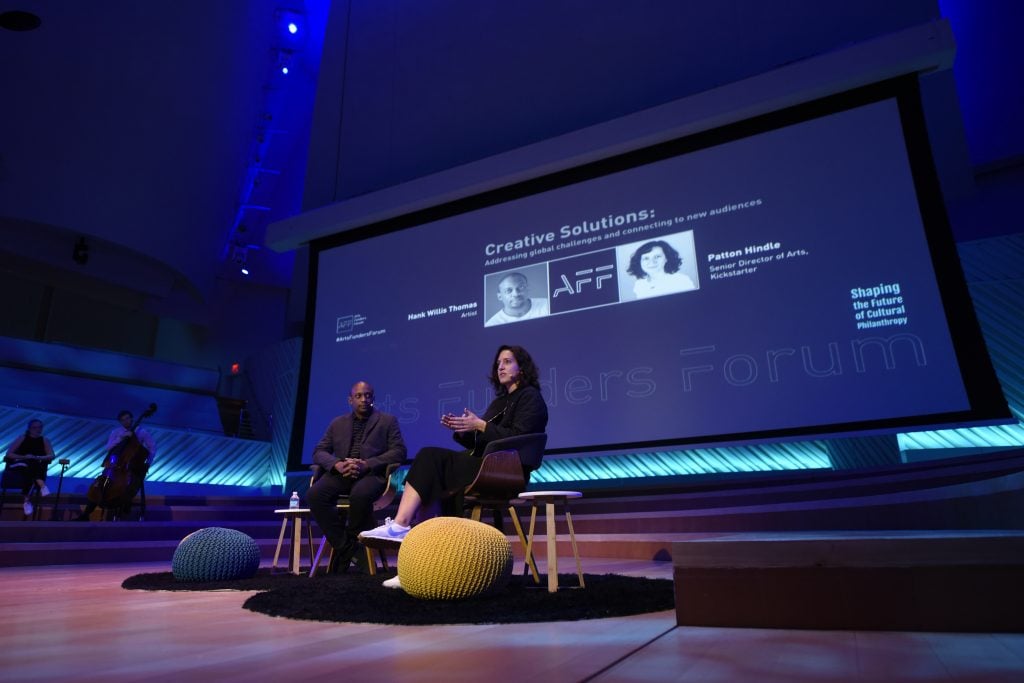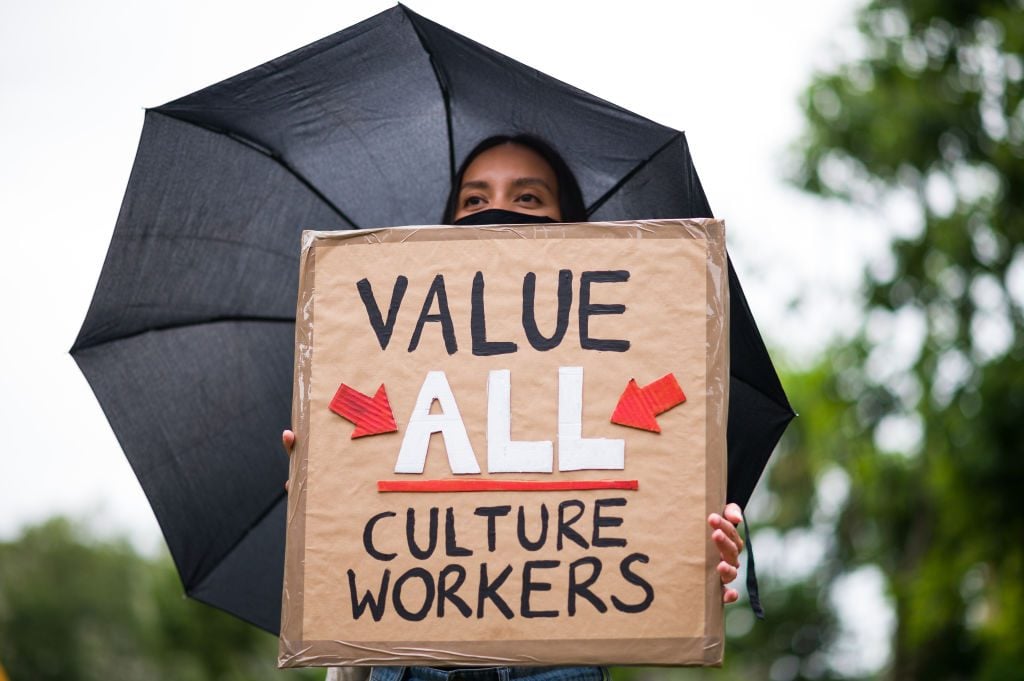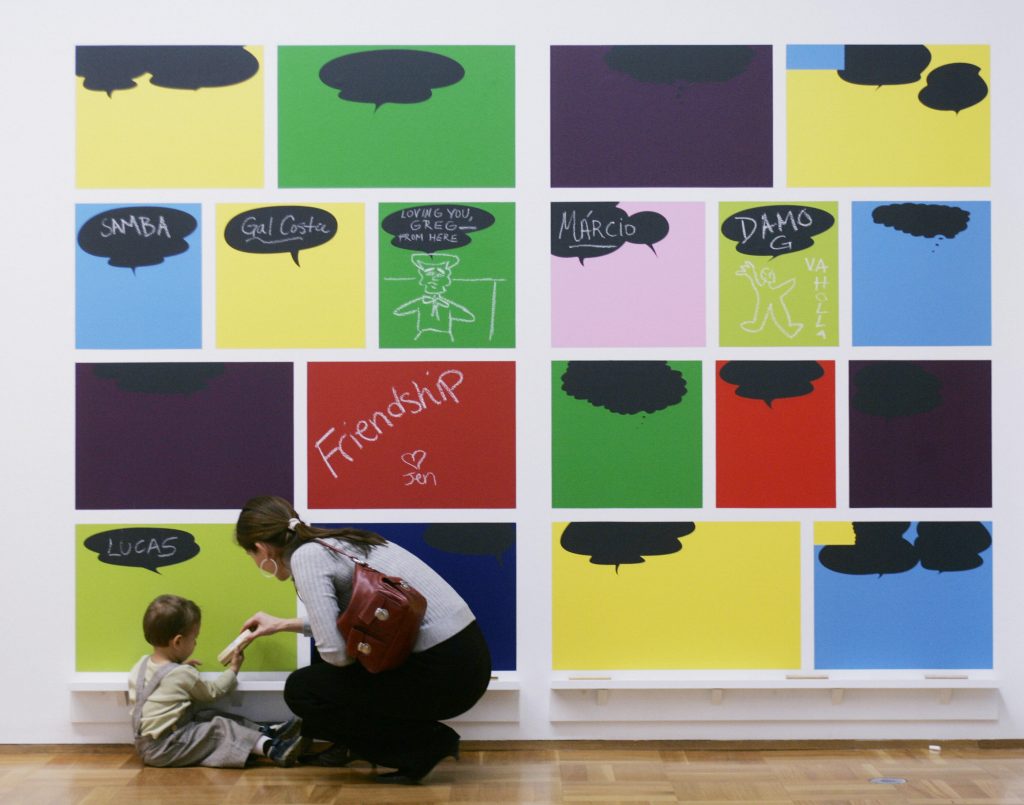Arts funding was in crisis well before 2020. But the events of this year have proven we can’t wait any longer to reimagine our models for a more sustainable future.
In the years leading up to 2020, overall charitable giving had been increasing, but support for the arts was not. With $30 trillion expected to be transferred over the next 30 years in the United States alone, we are in the midst of the largest intergenerational transfer of wealth in human history. But the generation inheriting this wealth has entirely different views about philanthropy than its predecessors.
The rising generation of donors is skeptical about the power of the arts to create a better world. Research shows that many of these funders prioritize advancing social, racial, environmental justice and equity; they seek specific, measurable impact; and they embrace technology to solve the pressing issues of our day.
What was previously a crisis is now existential. More than one third of Americans plan to decrease their philanthropic giving in 2021, or not give at all, according to a recent study. Of the causes Americans of all generations do plan to support, arts and culture does not even make the top seven.
When looking at these trends—and acknowledging that the arts sector has done a pretty awful job of explaining its relevance—I hope we can all agree that urgent action is needed. Reimagining is required if we expect to sustain a thriving arts sector that expands economic opportunity, heals communities, strengthens democracy, and inspires creative solutions to global challenges.
That’s why I, along with a consortium of innovators from the communications and arts sectors, established the Arts Funders Forum (AFF) in 2018: to develop new models of cultural philanthropy that will appeal to the values and priorities of new generations.
Our research, conferences, and virtual talks series have helped identify what these donors care about—and how the arts sector can best make its case to them. Ahead of our next conference today, I’d like to propose three recommendations for how the sector must change in order to rebuild from the current crises and create new, sustainable models that will ensure a robust cultural sector for generations to come.

Melissa Cowley Wolf. Photo: Santi Tuamsuk and Sheyssa Rosado.
1. We Must Change How We Talk About What We Do
Art funders and cultural leaders tell us that the arts do a subpar job of expressing the sector’s value to society. Art and culture is considered a “nice to have” not a “must have.” We need to better link the arts to solving global challenges, explaining how artist entrepreneurs have always helped drive societies forward, and are worthy of robust financial support. Here’s how.
Artists should see themselves as entrepreneurs essential to global progress, and funders must see themselves as impact investors and social venture capitalists. Period.
Organizations should think of themselves as conduits to the cause. Institutions must express how their work is making specific change in the world, and how what happens within the institution with regards to equity and diversity says as much about it as its professed aims. Recognizing that an institution is responsible to its largest group of stakeholders—its community—is essential in the new funding landscape.
It’s imperative to make the arts more accessible to broad audiences. The art world is intimidating on many levels; there are too many mental barriers and institutional signifiers of who belongs and who does not. Frequently, value in the arts is derived by a lack of transparency. The institutional/non-profit sector should not be riding the coattails of the market; in fact, perhaps it should be the other way around. We need to open up, drop the attitude, and create trust to grow the base of stakeholders.
Meet Silicon Valley where they are. The elephant in the room is who is not in the room: Silicon Valley, and its huge pool of wealth, is not engaged with cultural philanthropy because they do not see the impact it has on the world. Tech and creative entrepreneurs share many of the same attributes and goals: changing the world by breaking molds and tackling the most pressing challenges through innovation. We need to engage differently, along these lines, and articulate these similarities to create sustained engagement with the tech sector.

Artist Hank Willis Thomas and Patton Hindle, Head of Arts at Kickstarter, at the 2019 Arts Funders Forum. Image by Luis Olazabal, Courtesy Arts Funders Forum.
2. We Must Change How We Talk to Each Other
Our research uncovered that three out of four art funders believe that “collaboration and partnerships” and “new funding vehicles” will have the most significant impact on increasing funding for the arts. As we watch current models and organizations suffer perhaps irreversible damage, this is the moment to diversify our funding streams with input from all sides of the sector. This requires some new thinking.
The nonprofit model is not the only one. Alternative funding models, such as hybrids, for-profit models, social enterprise, and impact investing need to be further developed to align with how the next generation wants to invest, and how artists actually work. As artists act as creative entrepreneurs, municipalities and private investors who support entrepreneurship should also support artists and institutions.
Redefine the role of philanthropy. Funders should think beyond financial support and consider donations of expert time, real estate, and intellectual capital. Hands-on participation within arts communities can help build greater understanding of what resources are needed for long-term financial sustainability.
Art funders need to become more comfortable with risk. Investors have always embraced risk, from Wall Street to Silicon Valley. Opportunities emerge when social investors take more risks. By supporting emerging artists and disruptive cultural entities, funders can help drive innovation, see a return, and reinvent the arts.

Demonstrators protest outside Tate Modern over proposed job losses in the wake of the first lockdown. Photo by Leon Neal/Getty Images.
3. We Must Change What We’re Talking About
The emerging class of donors views cultural philanthropy through the lens of social justice, according to our survey. As these donors move to other areas of philanthropy, the arts must reflect on its purpose, and better tell the story of how it has historically been the sector of critical thinking and innovation, a commentary on our humanity, and driver of political and social progress.
Millennials and Gen Z audiences engage with organizations that speak to their core values, so institutions need to clearly define and communicate their social impact. Young philanthropists want opportunities to uplift communities and amplify solutions to global challenges. They want to drive more attention and funding to organizations that model—programmatically and organizationally—social justice, equity, and diversity.
The current paradigm shift forces us to leave behind antiquated ideas. This is a time of reckoning. Institutions and individuals are being asked to recognize and address structural inequities. Shifts in philanthropy are necessary to democratize funding so communities can have a vote in cultural engagement.
Reform the system from within. We can’t talk about changing philanthropy until we talk about democratizing pathways to wealth creation. The wealthy and powerful control our systems because they can give the most within the existing capitalist structure. In order to change our systems, we need to reform who has power.
***
This is the consequential moment in the trajectory of cultural philanthropy. It has never been more urgent to develop new funding models and tell better stories about the role of art in solving the world’s biggest problems. Investing in artists and cultural entities is investing in the advancement of education, health, social, racial, and environmental justice.
It’s time to rock this boat. The rising generations of donors were already yearning to redefine our systems and asking for new models. Artists and creatives can make the change we need in the world, but not without innovative investment structures that recognize and fund them as changemakers.
And here’s the silver lining: next-gen creatives and donors want this change. Now is the time to make it—together.
Melissa Cowley Wolf is the director of the Arts Funders Forum, a platform from M+D designed to increase private giving to arts and culture. She is also the founder of MCW Projects LLC, a consulting firm dedicated to expanding the next generation of cultural philanthropists, advocates, and audiences. Join the AFF Annual Summit on Tuesday, December 8, 3–5 p.m. EST to hear from leading innovators on the future of cultural philanthropy. If you missed the summit, you can see the video here.










